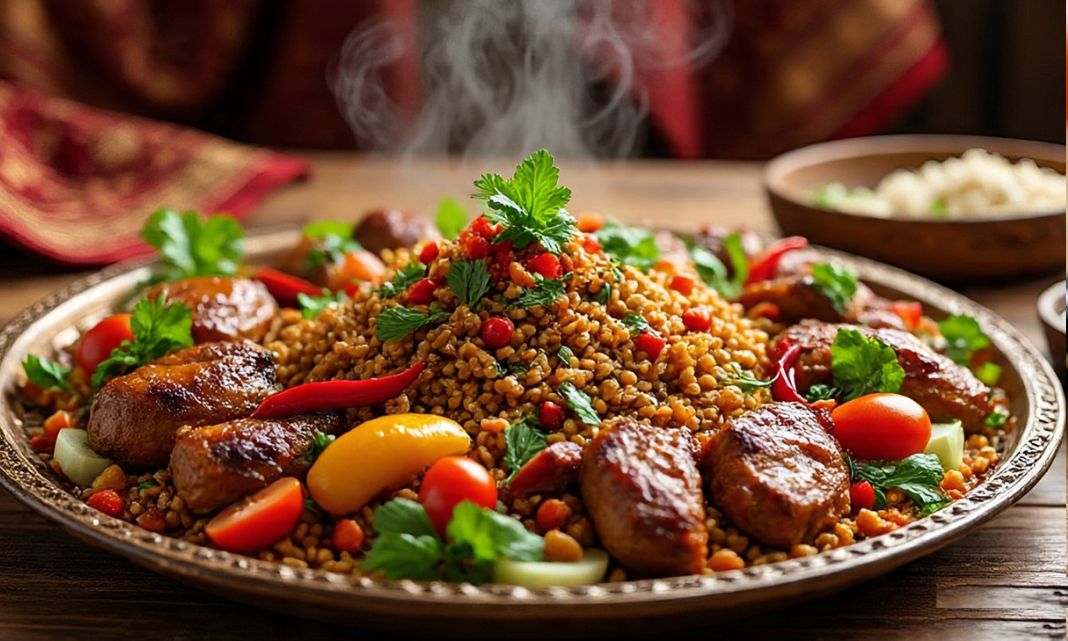Ceıvır is more than just one meal – it is a Pak treasure of Türkiye. This traditional cuisine has been passed for centuries, which connects generations through taste, culture, and tradition.
The rich, smoky, and deeply satisfying Ceıvır is prepared with love and served during functions, family ceremonies, and festivals.
If you have ever thought what makes Ceıvır so special, you are going to highlight its origin, cooking mysteries, regional tastes, and cultural importance.
The Origin and History of Ceıvır
- Ceıvır’s roots go back to Anatolia, where nomadic tribes perfected the art of cooking meat on open flames.
- For them, food was more than existence – it was about hospitality and sharing.
- Traditionally served at weddings, religious holidays, and village feasts.
- A symbol of community ceremonies and celebrations.
- Influenced by the Ottoman Empire, which introduced new spices and techniques.
Over time, Ceıvır evolved into a national treasure from a necessity – a dish that still unites people in Türkiye.
What Does “Ceıvır” Mean?
- The word Ceıvır comes from the Turkish verb “çevir”, which means “bend” or “to roam.”
- Refers to the slow cooking method on fire or coals.
- Traditionally prepared with lamb or goat, marinated with herbs and spices.
- Known for its smoky aroma, tenderness, and rich taste.
It is not just about eating; it is about sharing stories, laughter, and memories around the table.
Ceıvır’s Major Materials
A classic Ceıvır recipe connects simple yet powerful ingredients:
- Meat: Lamb or beef (preferred tender cuts).
- Vegetables: Onion, garlic, bell chili, and tomato.
- Spices: Cumin, black pepper, paprika.
- Fat: Provided lamb or olive oil.
This mixture of spices, fat, and fire converts simple material into a dish that speaks to the soul.
Traditional Preparation Methods
Ceıvır has not changed much in centuries in the authentic way of cooking:
- Marination: Meat is marinated with garlic, cumin, and spices for hours.
- Slow Cooking: Traditionally roasted on an open flame or oven.
- Taste Fusion: Vegetables like onion and chili are added for sweetness.
- Communal Serving: Placed on large platters, often eaten with fresh flatbread.
Result? Tender, smoky, and juicy meat that stays memorable long after the meal.
Regional Variations of Ceıvır
Every region of Türkiye has added its own turn to Ceıvır:
- South-East Anatolia: Spicy with chili flakes and cumin seeds.
- Aegean Area: Lighter with olive oil, parsley, and mint.
- Central Anatolia: Uses lentils or chickpeas for a hearty dish.
- Black Sea Coast: Rare versions combine Ceıvır with local seafood.
These regional differences make Ceıvır both diverse and deeply tied to Turkish identity.
Ceıvır in Modern Turkish Recipes
Today, Ceıvır is observed in both traditional homes and modern restaurants:
- Restaurants: Chefs reimagine Ceıvır with seasonal vegetables and stylish platings.
- Street Food: Quick and delicious versions available in markets and food stalls.
- Social Media: Turkish food bloggers and chefs share dishes, making Ceıvır famous worldwide.
It has become a dish that bridges tradition and modern taste.
Nutritional Benefits
Ceıvır is not just delicious – it is also nutritious:
- Protein-rich: Perfect for muscle repair and energy.
- Spices like cumin & black pepper: Help digestion and reduce inflammation.
- Vegetables: Provide vitamins and minerals.
- Balanced food: Often served with salads and bread.
Healthy, hearty, and flavorful – a perfect Turkish superfood.
Serving Suggestions
Ceıvır pairs beautifully with traditional sides:
- Fresh lavash or pide bread for dipping.
- Salads with tomato, cucumber, and parsley.
- Pickled vegetables for tangy contrast.
- A dollop of creamy yogurt to balance the smoky flavors.
Ideal for family feasts, festive occasions, or casual dinners.
Ceıvır in Turkish Culture
Ceıvır is more than food – it is a symbol of generosity and hospitality:
- Served during Ramadan, weddings, and community programs.
- Recipes passed down from grandparents to grandchildren.
- A dish that reflects regional pride and family traditions.
For many, preparing Ceıvır is as meaningful as eating it – about bonding, storytelling, and sharing heritage.
Frequently Asked Questions (FAQs)
Q1: What is Ceıvır?
Ceıvır is a traditional Turkish meat dish, usually lamb or beef, slow-cooked with spices and served during feasts and family gatherings.
Q2: Can Ceıvır be vegetarian?
Yes, although traditionally meat-based, vegetarian versions use lentils, chickpeas, or plant-based options.
Q3: Which spices are best for Ceıvır?
Cumin, black pepper, paprika, and garlic are classics, though regional variations add chili flakes, parsley, or mint.
Q4: How is Ceıvır served?
It is served with flatbread, salad, curd, or pickles for a complete food experience.
Q5: Why is Ceıvır important in Turkish culture?
It represents hospitality, abundance, and tradition, often taking center stage during festivals and religious holidays.
Conclusion
Ceıvır is more than a dish – it is a living piece of Turkish history. From its Anatolian roots to modern kitchens, it continues to delight taste buds and bring people together.
Whether enjoyed in a village feast or a modern restaurant, Ceıvır remains a celebration of flavor, family, and tradition.

